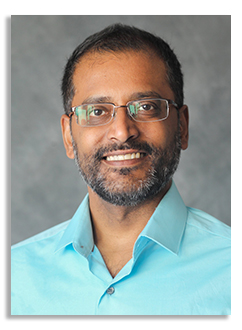
Abstract
Consider some of the most basic questions in quantum mechanics and its measurement via spectroscopy. One of the first questions in quantum mechanics is whether to work in the position or momentum representation. Chemists working with molecules prefer position, along with things like potential energy surfaces and reaction coordinates. Physicists working with extended solids prefer momentum, along with things like band structures. How to think about a mesoscopic material? In this case mesoscopic means meso between macroscale and microscale – nanoscale materials like quantum dots. In terms of measurement, one can perform spectroscopy in either the frequency domain or the time domain. Isolated molecules and perfect solids are generally studied in the frequency domain, whereas disordered liquids and glasses are generally studied in the time domain. What about the meso scale in terms of order and disorder? How to measure and describe the new metal halide perovskites which have recently been shown to support liquid/solid duality 1? These two fundamental and profound questions connecting Chemistry and Physics and Engineering and Materials Science will be discussed. We will use the full suite of our ultrafast laser spectroscopic tools to explore some of the deepest ideas in liquid/solid duality in new materials.
Our approach begins with time-resolved photoluminescence spectroscopy (t-PL) as a simple and intuitive method to reveal light emissive properties of materials. We then move to transient-absorption (TA) spectroscopy to probe earlier time dynamics of excitons and phonons and polarons. We ultimately move to two-dimensional electronic (2DE) spectroscopy to reveal glimpses of the earliest dynamics, many-body processes, and coherent effects2,3. In short, we apply three world leading spectroscopies to unravel some of the deepest questions of mesoscale materials for our optoelectronic future.
(1) Kambhampati, P. Learning about the Structural Dynamics of Semiconductor Perovskites from Electron Solvation Dynamics. The Journal of Physical Chemistry C 2021, 125, 23571-23586.
(2) Brosseau, P. J.; Geuchies, J. J.; Jasrasaria, D.; Houtepen, A. J.; Rabani, E.; Kambhampati, P. Ultrafast hole relaxation dynamics in quantum dots revealed by two-dimensional electronic spectroscopy. Communications Physics 2023, 6, 48.
(3) Seiler, H.; Palato, S.; Sonnichsen, C.; Baker, H.; Socie, E.; Strandell, D. P.; Kambhampati, P. Two-dimensional electronic spectroscopy reveals liquid-like lineshape dynamics in CsPbI3 perovskite nanocrystals. Nat. Commun. 2019, 10, 4962.
Click here to see all available video seminars.
Click here to go to the SPREE HOMEPAGE.
Brief Bio
Dr. Patanjali Kambhampati is a Professor in the Department of Chemistry at McGill University and is an internationally recognized expert on semiconductor quantum dots and ultrafast laser science. He has generated $7M in research funding. He has published over 80 papers with over 8000 citations. He has delivered invited departmental colloquia in over 50 institutions including: MIT (3x), Princeton (2x), Columbia, Chicago, Northwestern. He has written five invited review articles on the state of the field of quantum dots, one invited white paper on laser science, and has had six primary articles publicized in the media. Kambhampati has been awarded the McGill University Fessenden Professorship as well as the Fessenden Prize (2012) for research innovation towards commercialization activities, followed by the Wares Prize (2019). He was awarded a Lady Davis Visiting Professorship at the Hebrew University in Jerusalem (2021). He was awarded the Polanyi Award of the Chemical Society of Canada (2022). He is on the International Advisory Board of the Journal of Physical Chemistry Letters. Kambhampati has four US Patents. He has done R&D collaborations work with several corporations in Europe and North America: Fastlite (France), NN-Labs (USA), QD Vision (USA). Few-cycle (Canada). Axis Photonique (Canada). Two Photon (Canada). Five of his former students went on to PDF at leading groups in ETH Zurich, Fritz Haber Berlin, Toronto, MIT, Illinois. One of his former PHD students is an Assistant Professor of Physics at Free University (Berlin).
